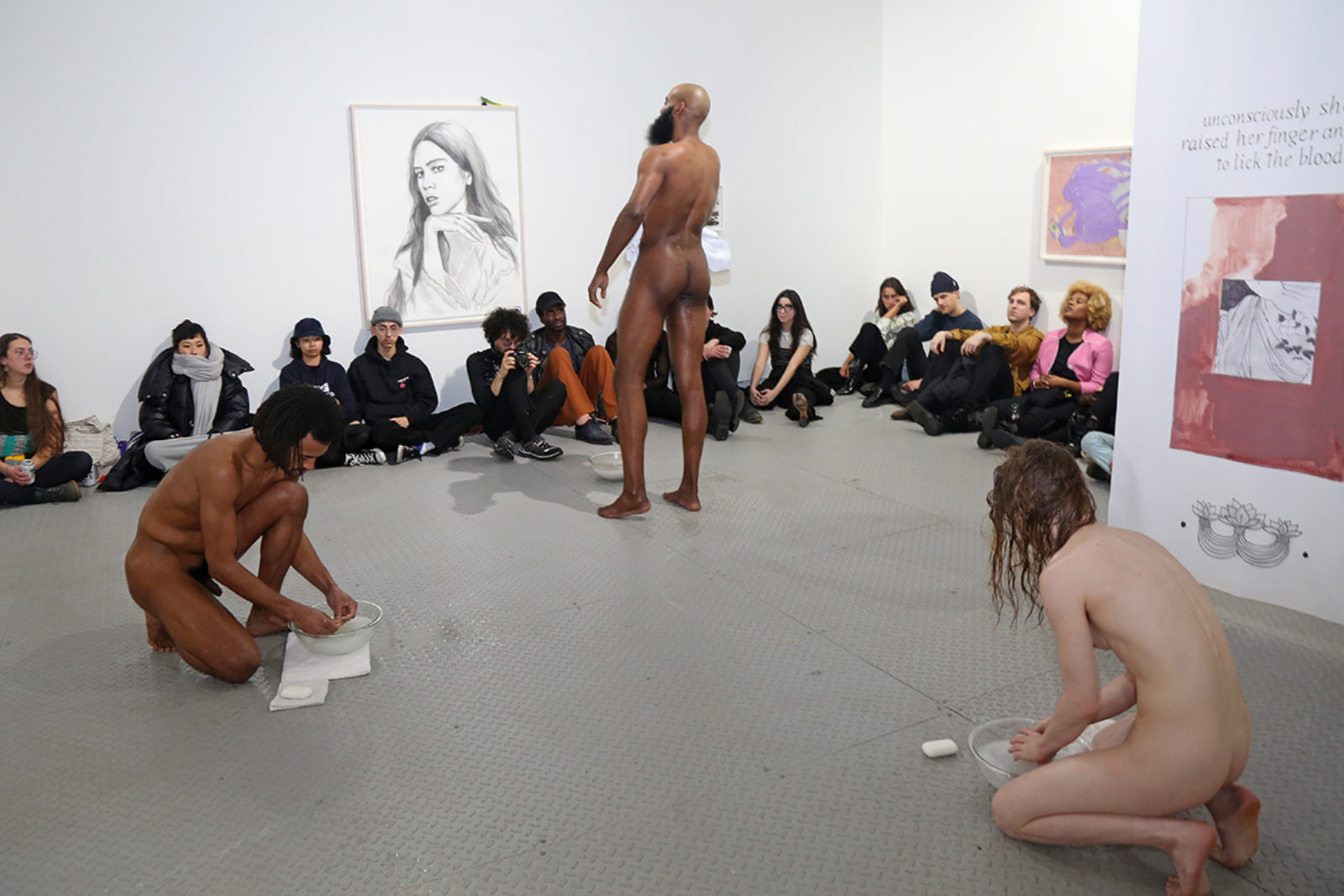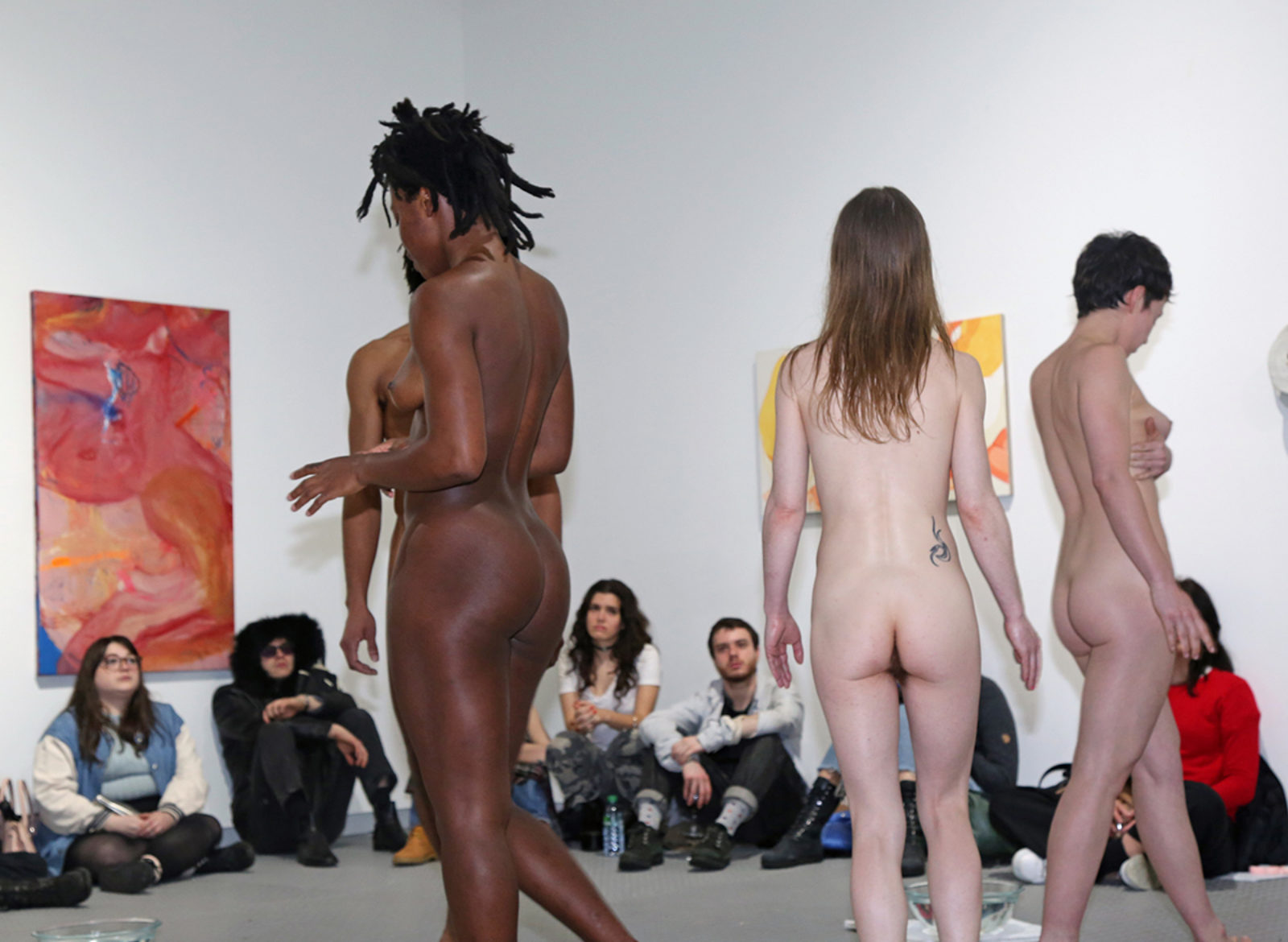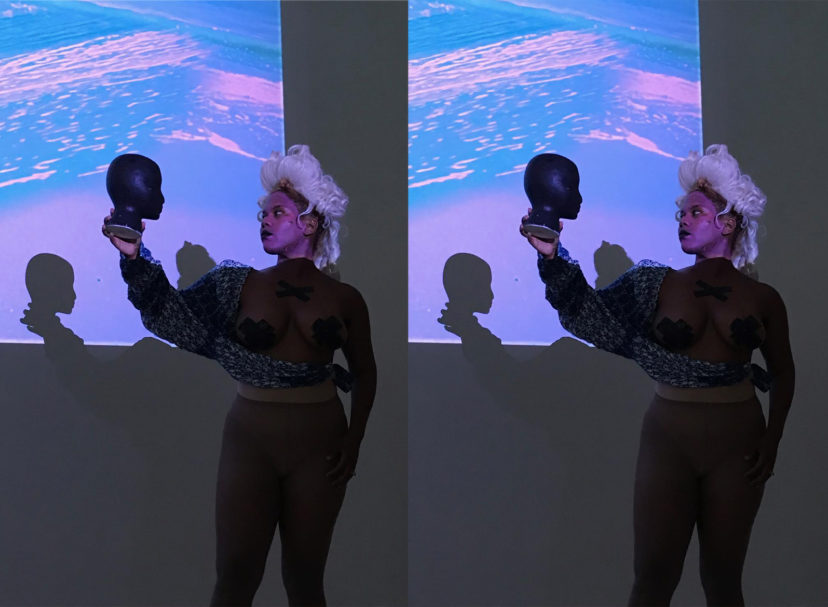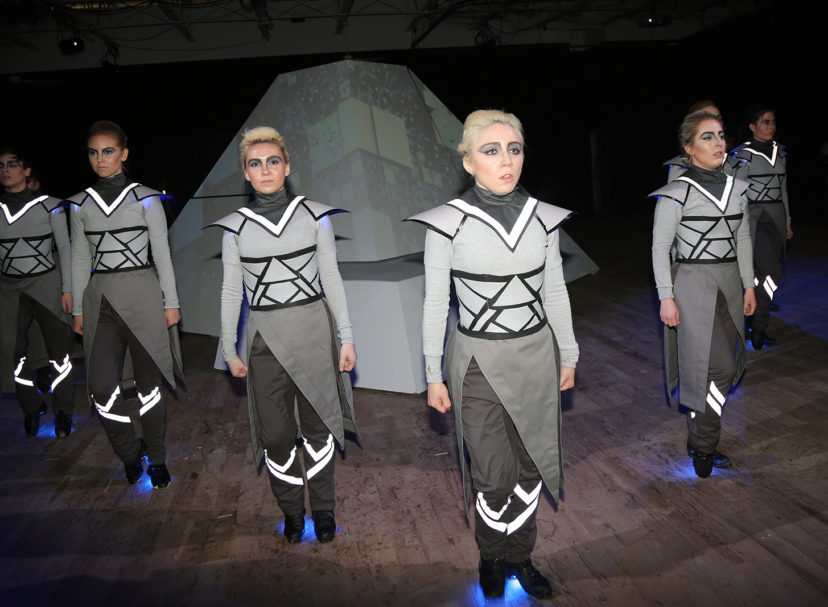Interview: Jillian Billard
Photo: Olimpia Dior
Jamaican-born artist Tara-Jo Tashna draws inspiration from her surroundings. The Brooklyn-based choreographer, performer, and musician moves and expresses with ease and grace; and yet her work is far more complex than its obvious beauty. As viewers, we get the sense that we are witnessing an emergence, or what Tashna calls an “exorcism,” discovering something alongside the artist.
As a choreographer, Tashna offers the same exploratory experience to her performers, giving loose direction and guiding each performer towards a revelation of their own. In her recent piece, deliberation, Tashna incited an exercise which grew into a conversation between performers. Organically the dialogue grew, creating a glorious display of methodical entropy. Interested in what it means to witness this mutual self-exploration, Tashna is unafraid of continually interrogating and workshopping the modality of performance.
Tashna has garnered a great deal of acclaim for her works in recent years, and has performed at a number of venues including Signal Gallery, Wild Project, Metro Pictures Gallery, Grace Exhibition Space, Mana Contemporary, The Guggenheim, Arsenal Contemporary, and MoMA PS1. We spoke to Tara about her process in choreographing deliberation; the importance of community and support not just in a creative field but within society at large; and the process of choreographing a piece with a focus on the internal emotional landscape of the performers, rather than what the movement looks like from the outside.
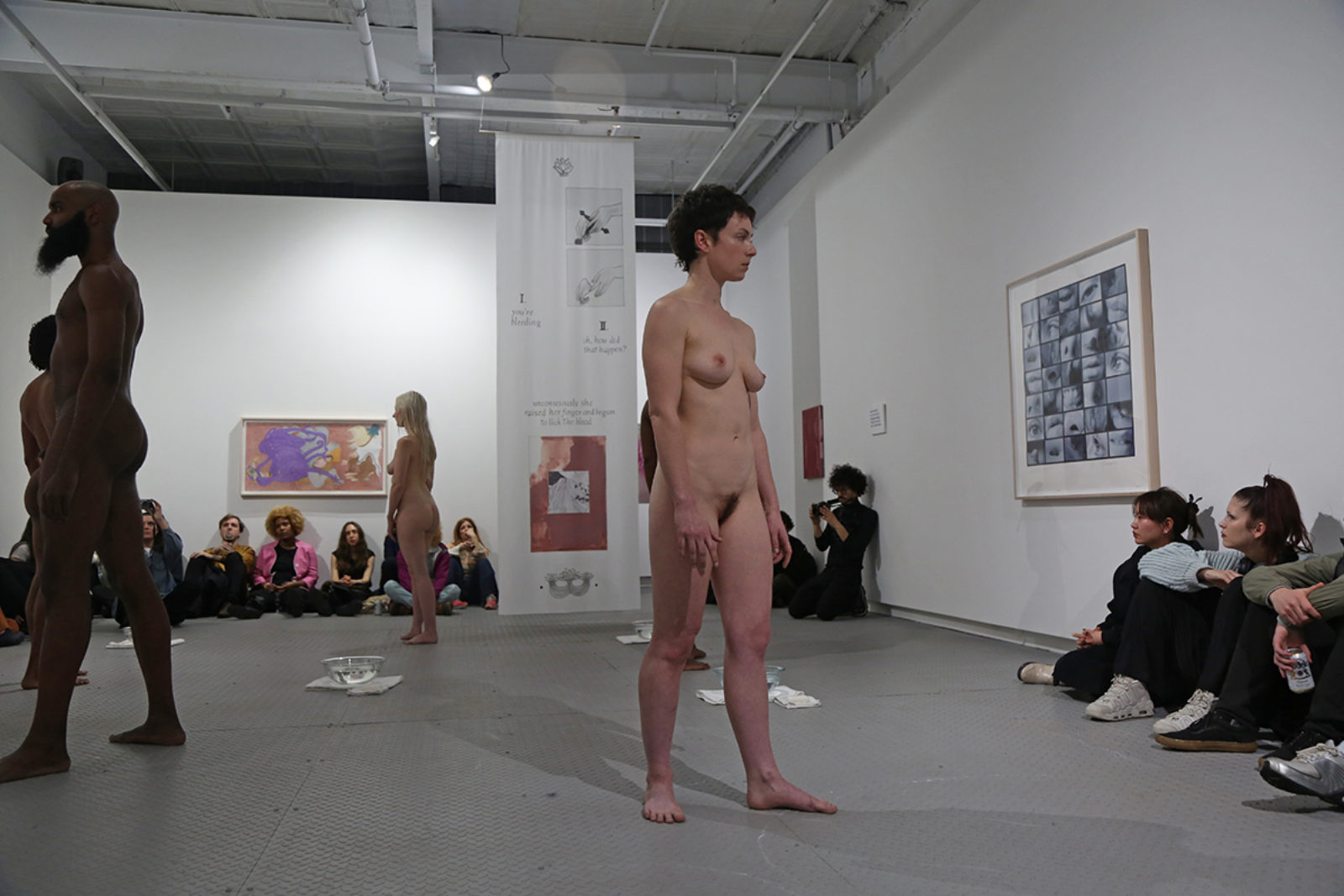
So let’s start from the beginning. Do you want to talk a bit about your life growing up? Were you exposed to dance and performance at a young age?
I was born in Jamaica. I lived in the countryside with my three older sisters, my aunt and uncle, and my mother. My mother moved to the states when I was young, and when I was six, my siblings and I moved here with her. We lived in the one bedroom apartment that my mom had been living in for a short while before moving into a larger apartment. My mother wanted to give us everything. When I got here she enrolled me in dance and gymnastics classes.
When did you become interested in performance?
From elementary school to high school I did a lot of plays, primarily musical theatre. I also choreographed and performed in local shows. I stopped performing for a couple of years after high school, and during that time I was primarily working on music––writing songs with a friend of mine. Eventually we started doing shows here and there. I also sang backup for a few of my friends’ music projects.
I started more physical performance work a few years back after working on two pieces with Monica Mirabile and Sigrid Lauren. Since then, things have just kept rolling, and I haven’t really stopped.
How has your work evolved since those first two projects with Monica and Sigrid?
As it is with everything, every project is a learning process; from being in other people’s work, to working independently, to directing other bodies. In terms of my own work, I’m constantly workshopping. I’m working out what it is that I want to see and do in performance; and the way in which I’m interested in seeing a narrative unfold.
How long have you lived in Brooklyn? How has being in New York City influenced your practice?
I’ve been living in Brooklyn officially for about 4 years now, but prior to that I spent a lot of time here, as my social circle was primarily in Brooklyn. Before I moved into my own apartment I spent a lot of time at my partner’s home in Bedstuy on Malcolm X. During that time I was fully in the throws of not wanting to inhabit the sphere that I was existing in. I felt I needed to escape the city, and the states as a whole. Taking the A/C train when it was still primarily POC, I fell into a spiral. I wanted to understand why my people and people like me were existing the way they do in this white dominated world.
While working on the last performance I took part in, I was taking the A train to the G train to get to Long Island City Monday-Sunday; every day for a whole week. During that time, I started reading Zora Neale Hurston on the train. Reading this text really made me reflect on the past of my people while traveling through Bed-Stuy, Williamsburg, Greenpoint, and LIC; all areas in different stages of the same change, where there exists this deep divide between longstanding residents and newcomers. Being an immigrant and a black woman and watching this happen makes me feel so helpless sometimes. The change is happening so rapidly and it exists everywhere, all over the world, but it seems like here in New York it might be more drastic than other places because this is such a destination location.
In my early 20s I was enveloped in feelings of anger, but now I am working every day to do as much as I can to turn that anger into something beautiful. I’m interested in making work that invites more dialogue, seeing diverse bodies existing amongst each other and having new narratives be the focal point of the information we’re digesting. I want POC and all marginalized people to see others like them make work and be the focal point of media we’re receiving.
Why is community so vital, and how do you foster community in this creative field?
Community is important overall. Support systems are so important. I feel extremely fortunate for the opportunity to work with people that I love. As you work with people creatively you get to know them more. And when we work with each other we are aware of each other’s strength and limitations and we’re able to communicate to each other what we are or aren’t comfortable doing. This allows you room to be your true self while working creatively with others.
I’m really inspired by my peers and what they’re doing. Everyone is so talented and filled with fuel to create, it really blows my mind sometimes what we’re all capable of doing.
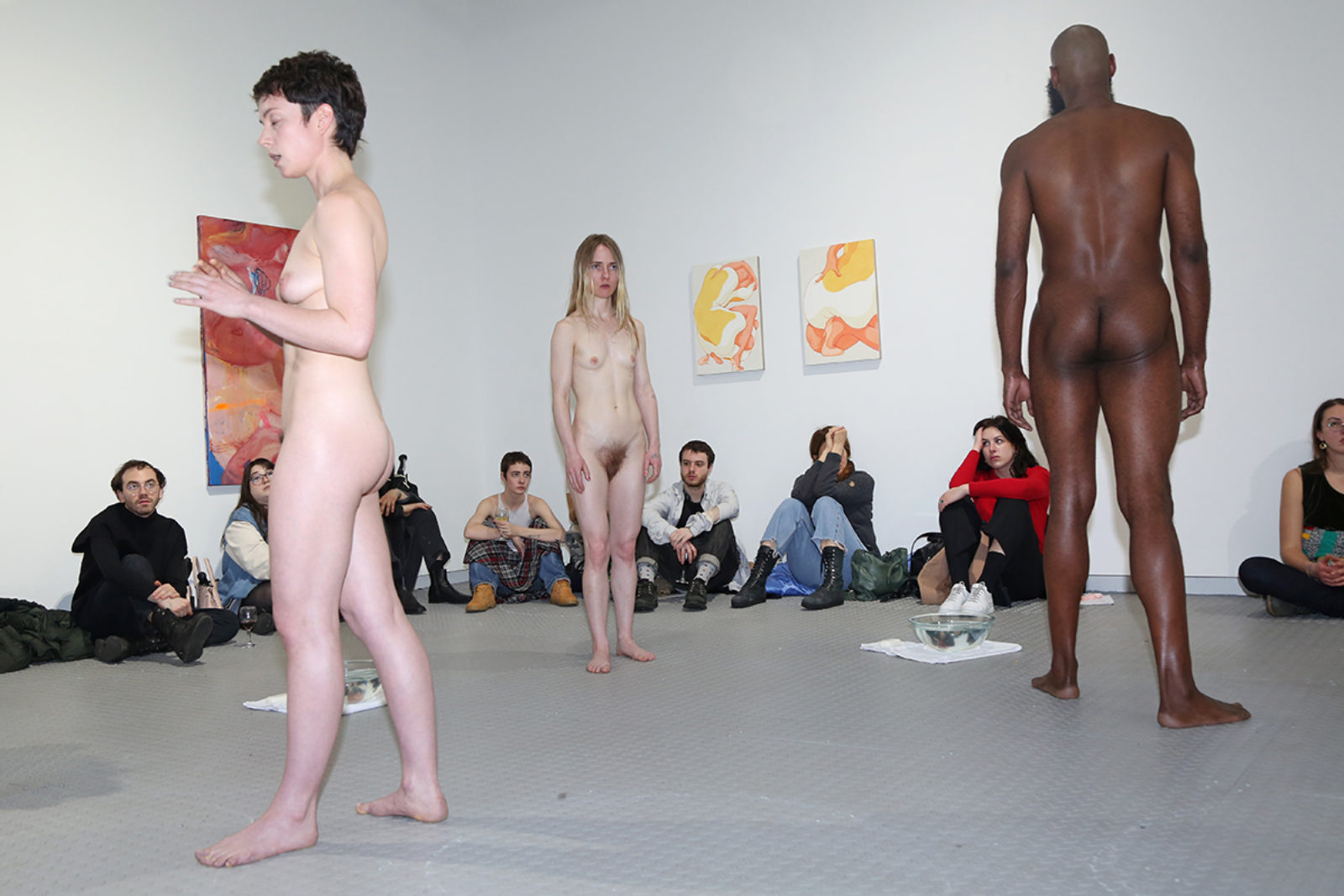
I’m working out what it is that I want to see and do in performance; and the way in which I’m interested in seeing a narrative unfold.
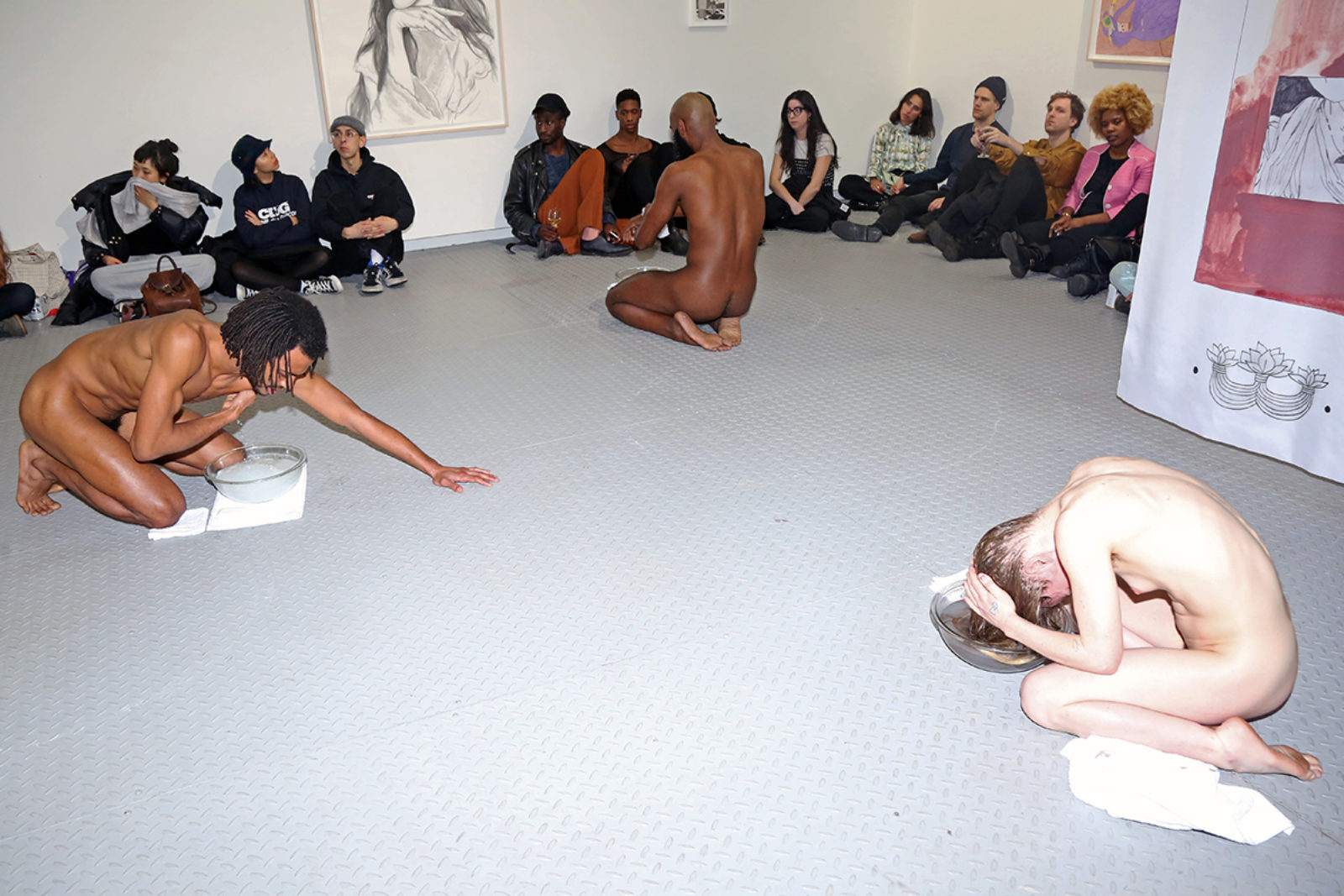
You are an integral figure in the experimental movement group and space Otion Front. Can you talk a bit about your experience with Otion Front, and how it came about?
After working on a large scale project directed by Otion Front members Sarah Kinlaw and Monica Mirabile, I was invited to become a part of the collective. It had consisted of 5 working artists that curated various events, hosted workshops, and also ran a residency program. It was a group of performers who created their own subverted reality to make work and space for other like-minded artists. I’ve talked to so many disillusioned dancers and performers and have expressed to them that there’s another way of doing things. We all have the power to create the reality we want and that’s kind of what Otion Front has done.
During my time as a part of Otion Front I learned so much about putting together work, communicating and taking care of more technical aspects of putting a performance together. I also had this incredible support group around me. We discussed everything from our personal lives, to ideas about work that we were interested in seeing and making. Earlier this year I decided to take a step back from the space, Otion Front and everyone involved will always be my family.
You work in a variety of mediums, each involving the physical body (singing/movement/dance). How do these modalities overlap and feed into one another? Which do you find to be the most palpable form of expression?
I’ve spent a lot of time weighing my abilities and trying to decide which resonates with me the most. Right now I am trying to focus on singing and movement work as two separate modes of expression so that I can develop each modality in such a way that I can confidently incorporate the two.
I’m very interested in movement and acting coming together. I think any dancer or movement artist has some ability to act. The expression doesn’t seem complete without the ability to feel the full expression not only in the movements you make, but also in your emotional expression. So although I’m a singing, moving, and acting body that will naturally incorporate all three things, I’m interested in isolating movement and acting in order to create narratives that way.
Your work seems as much a personal exploration as a form of expression. What is your experience of this? Does your interpretation of a piece alter each time you perform it?
When I first started doing some solo performances, it was definitely cathartic for me. It wasn’t so much about the audience in as much as it was an exorcism that others were there to watch. Now I’m thinking about making work as a conversation.
As I continue to workshop ideas, I hope to eventually put it all together. So currently I’m making works that are all different in the hopes of having them all culminate into one larger body of work.
Can you talk a bit about your recent performance, deliberation at Arsenal Contemporary? What was your thought process behind this stunning work?
The piece that became deliberation had originally started in my mind as a body exhibit. The piece starts out with a group of bodies frozen in a room. I think I had a dream that I needed to interpret to myself, and this became the base inspiration for the piece. I imagined an utterance that would start out small, as though the performer was trying to solve a puzzle, or come to some sort of understanding as they spoke. This utterance would grow until there was a cacophony of sound. I included the bathing scene because it’s something that I’m interested in always bringing back into work that I make now: a cleansing. It goes back to being in Mandeville at my home in Jamaica with the tin tub in the dirt, filled with water we caught from the tank, washing myself clean.
The rehearsals were centered around discussions we had upon entering the room. Everyone shared personal things they were experiencing, dealing with, and thinking about. We did some walking exercises around the space, and then I gave the group directions to start and stop in various places, beginning their utterance with the thoughts they had shared when we first came together. After the exercises, we would discuss what the experience was like for everyone and go back and try it again. Besides the ordering and placement of the performers, everything was driven by the performers themselves; the way in which they spoke and used their voices, and their decisions about moving around the space. Offering loose directions for the performers to create a narrative for themselves allowed an organized chaos to arise. They each partake in an interplay of movement and acting, acting as free agents. I think this is really engaging to watch.
The physical body has this incredible way of tapping into an understanding that goes beyond language. Similar to poetry; it often defies logical interpretation. With your work, do you intend to elicit a specific understanding within your audiences, or is the experience more ephemeral?
I think performance first starts with the performers and how they feel during a piece. This is really new to me. It’s easy to focus on what the piece looks like from the outside but with deliberation I really wanted it to be about what the performers were feeling. I wanted everything to be in real time, and was fine with the audience just taking on the role of the spectator. I think no matter what, everyone is going to feel a way that’s unique to them and so in that I’m not really concerned with conjuring anything specific. In this way the audience can build their own understanding of a piece and conversation about a work can come about naturally.
How does costuming (or lack thereof) play into a performative work? What informed your decision to have each of the performers be nude?
I remember that at some point I had made the decision to perform nude for the sake of another type of body to be seen other than a white frail body. I also thought of nudity as a way towards deconstructing sexual repression.
Nudity in a performance is existing in our natural costumes. In performance I’m interested in nudity taking on the role of normalcy just as much as a clothed performer would be seen––but it’s taboo and makes a lot of people uncomfortable, and in that way it makes the performers extremely vulnerable. For this piece I wanted the performers to feel vulnerable, exposed but also wanted to give the audience permission to look.
What are you working on right now?
Right now I’m working on writing a large scale performance piece. I’m imagining a piece with at least 20 people in it and I’m thinking of my creative community and who I’d like to choreograph for it, trying to conjure up what the set looks like and whose work would align with my vision for that. I’m really excited about the images that are coming to mind overall. And after I’ve written enough I’ll begin to look for funding in order to make this piece a reality.
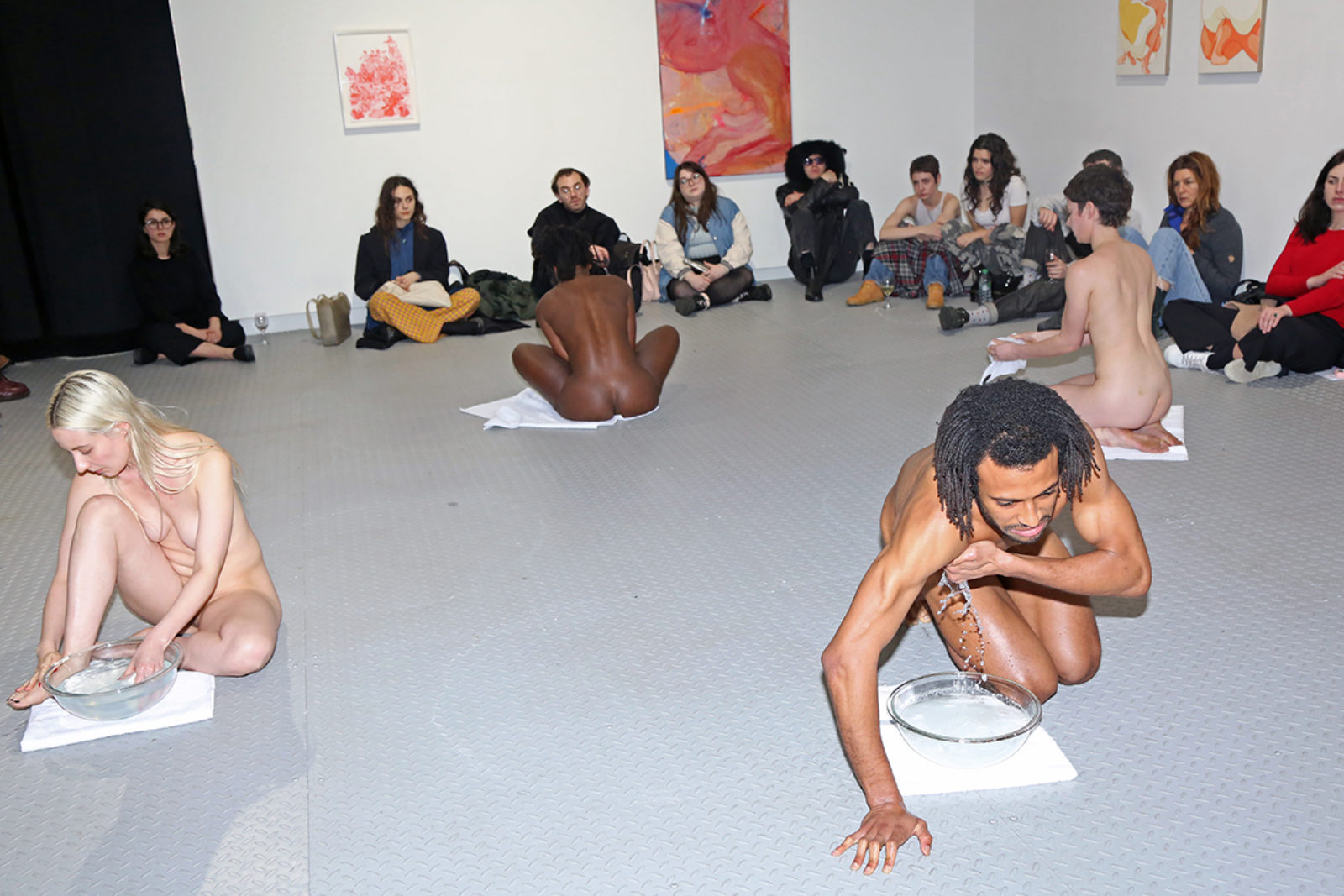
Besides the ordering and placement of the performers, everything was driven by the performers themselves; the way in which they spoke and used their voices, and their decisions about moving around the space.
